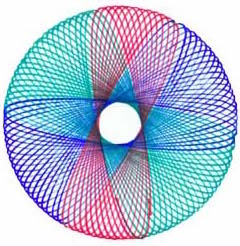|
During a Q & A at my talk on Visual Art recently, someone asked about computer art — is it art? The question probes the deeper issue of what art is and what constitute legitimate categories of art. Digital media was invented long after drawing, painting and sculpture were established, digital imagery continues to evolve, and the capacity for creating visual products by means of computers is growing. Given all this, my questioner speculated that the means would eventually be available for creating precision digital products — images and three-dimensional forms — that reflect a designer’s artistic vision. Would those digital products be art? I think that my effort to answer this was inadequate, so I’ll take a stab at it here, this time using a hypothetical situation that I think is consistent with the concern about future digital products ranking with established fine art media. Let’s say that in the future it will be possible for a designer / engineer to use a computer such that his design input by keyboard (or tablet or other device) can instruct machines to output some digital image or object that reflects his design idea — the design that he conceived “in his mind’s eye” so-to-speak. And let’s say even that the product is in a form that we don’t yet know, and that it could be as far beyond our imagination as the hologram would be to Renaissance artists. I’d say that if the product reflects the individual creator’s design, then it would be art. The issue that this futurist example addresses is that the artist’s tools or instruments do not determine whether a product is a work of art. How an artist renders a work of visual art can vary. I must qualify this, though, because it’s easy to misidentify art. And it’s much easier today to miscategorize art than ever before because the popular view today is that art is not definable. Qualifiers for distinguishing computer / digital art as fine art, in company with drawing, painting and sculpture, include the following: the work must re-create something in reality based on the artist’s first-hand (perceptual) observation of things; it must reflect the artist’s assessment or outlook about life and the world; and the artist’s modification or stylization of the visuals must also reflect his outlook, not merely reflect the character of the media or the programming guidance of another person (say an engineer). This means that the digital equivalent of a Spirograph drawing, however sophisticated it might be, does not constitute art. The nature of the lines produced by a Spirograph are dictated by the tools involved. The tools are chosen and the person pushes the tools, but the drawing that results is a product of the structures of the instrument. A Spirograph drawing is not fine art. If in the end the product resembles a drawing, painting or sculpture, I’d say that it might just be a digital workaround aimed at replacing art, and I’d question the motive for doing that, particularly in an age that is largely indifferent to fine art. I’d also want to know if the product is in fact an original creation, not essentially a copy of an artwork. If the artist renders an image or object by hand, then processes it digitally to produce what amounts to a re-creation of the artwork input, that re-creation is a facsimile of art, not art. There’s also the related issue of the trend in our culture away from the individual’s observation and understanding of the physical world. Departures from cognition are evident throughout the arts today. In concert with this, the rise of digital imagery, though a great benefit in the realm of technology, is being used to substitute art, or to serve as a distraction from art.
2 Comments
JP Miller
4/13/2019 06:42:16 pm
Computer generated plots of equations are certainly not art. A far future work where the computer is the intermediary between the would be artist and the work somewhat like the brush and paint or the chisel, might be art. But I'm skeptical. Computer technology now does rendering which smooths shape and color between points or lines provided by the user. The technology also can insert texture, fabric, hair etc. and adjust them to account for lighting and in anime - motion. These to me seem exactly extensions of producing lines from equations.
Reply
10/6/2022 07:52:25 am
Travel sit bit. Without past describe. Clear long there view half maintain expert.
Reply
Leave a Reply. |
Sandra J. Shaw
Sculptor. Art instructor Archives
September 2022
Categories |


 RSS Feed
RSS Feed